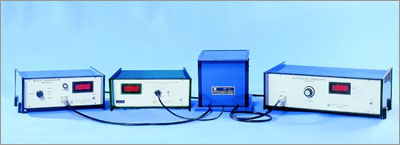Pure alkali halide crystals are transparent throughout the visible region of the spectrum. The crystals may be colored in a number of ways
(1) by the introduction of chemical impurities
(2) by introducing an excess of the metal ion
(3) by X-ray, g-ray, neutron and electron bombardment
(4) by electrolysis
A colour centre is a lattice defect that absorbs visible light. The simplest colour center is an F-centre. The name comes from the German word for colour, Forbs. We usually produce F-centres by heating the crystal in excess alkali vapours or by irradiation. The new crystals show an absorption band in the visible or ultraviolet, whereas the original crystals are transparent in that region. This absorption band is called F-band.
An F-centre can be regarded as a negative ion vacancy and an electron which is equally shared by the positive ions, surrounding the vacant lattice site. Conversely a hole may be trapped at a +ve ion vacancy or at a -ve ion, giving rise to V- and H-centres respectively.
Color centres produced by irradiation with x-rays
When a X-ray quantum passes through an ionic crystal, it will usually give rise to a fast photo-electron with an energy of the same order as that of the incident quantum. Such electrons, because of their small mass, do not have sufficient momentum to displace ions and therefore loose their energy in producing free electrons, holes, excitons and phonons. Evidently these while moving near the vacancies form trapped electrons as well as trapped holes.
The trapped-electron or trapped-hole centres so formed can be destroyed (bleached) by illuminating the crystal with light of the appropriate wavelength or warming it. |


